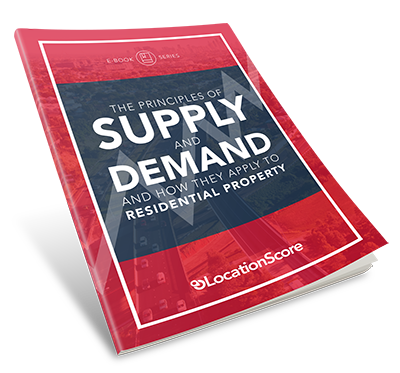×

The Principles of Supply and Demand and How They Apply to Residential Property
We Only Send You Awesome Stuff

LocationScore
|
June 2, 2017
Bryce: Right folks, it's the Location Score Lads here to talk about all things Average Vendor Discount. And I suppose again, the obvious question is, what is the Average Vendor Discount boys?
Ben: So the Average Vendor Discount is basically measuring what the asking price started on the advertised website, how much that changed throughout the campaign. So if there's a big discount, obviously it means that property hasn't got that underpinning demand to actually get the value it's looking at. So it's measure collects that data at the start and we look at ultimately what it sold for.
Bryce: Why is that actually important Jeremy? If someone is to say out on the field, how can they use that to their advantage?
Jeremy: Ok well it all comes back to supply and demand again. So picture a market where demand exceeds supply by a significant degree. You can picture a vendor not having to lower their price by very much to get a sale. You can see that they're going to be getting great offers from possibly multiple potential buyers so they don't need to discount their property by very much and the discount therefore correlates quite closely with high demand, low supply, and of course supply and demand are the only determiners of price growth as a key indicator.
Bryce: Yes it is a key sign isn't it, because you know often people think well here's an advertised price, if I can haggle down some off the price then that's a good result. But if people are staying firm, posture is strong, you know investors can use that as a really strong indicator can't they?
Ben: Yes they can and there are still some blind spots because obviously if the property is going to auction, then there is no advertised price so we're not necessarily collecting that initial data point. In regional towns and in sort of larger regional centres, terrific isn't it because the agents will put a price point on their advertisement and that's when they're collecting it. But in some areas there is a bit of a challenge there isn't there Jeremy?
Jeremy: Yes, well it comes down to how the real estate agent wants to advertise the property for sale. Most of them will set a price that is way above what they really expect.
Bryce: No!
Jeremy: So it's things like, offers above $500,000 , we've got no idea. What was the original asking price? It starts at $500,000 and they sell for $480,000 , about $20,000 discount. You've got a measure. So there are some issues with reliability. You can get quite a small or thin sample size which can make the figures a little hard to accurately calculate.
Bryce: And the problem is that it sounds like a very simple measure but to be able to someone manually do that across multiple suburbs is the real challenge so, doesn't sound that tough but actually being able to do that across many markets is the real challenge.
Jeremy: Yes, and you've got real estate agents who list a price with some sort of peculiar description. So you might have offers above or you might see suits buyers with 500+ so analysing the text of the price description when it comes in so many different forms is yeah, definitely a big challenge.
Ben: Now there are regulatory challenges in there as well. In some markets, we're starting to see the state governments regulate how you can promote the property. So range is greater than 10% but banned in some areas. So you can't have a range from say 500 to 600,000 , you've got to keep those ranges in tight. So it doesn't work that great in auction areas because we really don't get a statistically reliable number, but it certainly works fantastically in some of those areas where it's private treaty sale country, and that's where you get the best results.
Bryce: What you see is a really good vendor discount, when you see that's a sign, now I'm in. What does it apply for you?
Jeremy: Well long term the 7% mark is normal so anything around 5% or less I think is a great indicator that there's higher demand than supply. Anything above 10% I would be avoiding those sort of markets, or at least be cautious of those kind of markets.
Bryce: So there you have it folks, if you do some research on some properties, have a look at the Average Vendor Discount.
Note: This is just a brief explanation on Average Vendor Discount. If you are interested to learn how you can apply this in your own research, our upcoming webinar will unpack this in more details. Learn more about our webinar here.
Most Popular Blog Posts